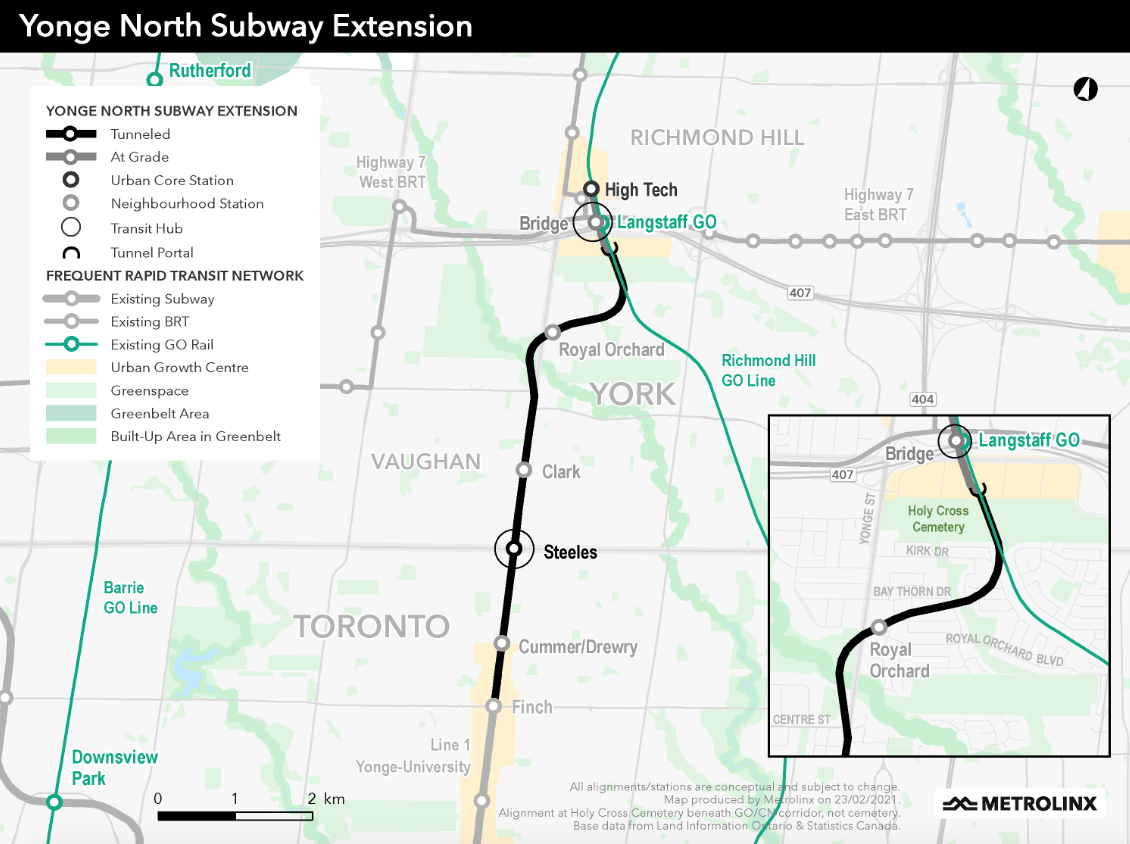New plans for Yonge North Subway Extension have fewer stations, above-ground track

In an attempt to stay on budget, the Ontario government’s planned Yonge North Subway Extension is now set to have fewer stations than originally proposed and will have a portion of the track run above ground.
Earlier versions of the subway extension, which will run from Finch Station on TTC’s Line 1 up to Richmond Hill, called for six stations. Metrolinx, the company overseeing the project on behalf of the provincial government, released new plans on Thursday showing a four-station route.
The Yonge North Subway Extension currently has $5.6 billion in funding, and according to Metrolinx, the original six-station plan could not be accommodated within that budget. The new four-station route with above-ground stations — which are less costly to build — is more feasible.
“The recommended alignment maximizes the benefits of the extension while achieving the lowest cost for the minimum project scope, including the potential for up to four stations to be included within the announced $5.6 billion funding envelope,” said Natasha Tremblay, spokesperson for the Minister of Transportation.

Metrolinx
According to the updated plans, a station at Steeles Avenue will be built underground while two above-ground stations — Bridge, built between Highway 7 and the 401, and High Tech, built under the bridge on High Tech Road — have been proposed for Richmond Hill. Metrolinx says it is currently working with municipal partners to determine the exact location of the fourth station.
“Steeles, Bridge and High Tech stations were determined to be essential for maximizing the benefits of the project,” a Metrolinx news release reads. “These stations will significantly improve access to frequent rapid transit and support the growth of the neighbourhoods they serve.”
- See also:
The Bridge station will provide connections to the Richmond Hill GO line and GO buses, as well as link to the Richmond Hill Centre and Langstaff Gateway urban growth centres.
“Bridge Station maximizes the potential for new communities to grow by bringing the subway closer to development areas,” said Principal Sponsor of Planning and Development with Metrolinx Becca Nagorsky.
According to Tremblay, building the stations above ground will also allow the extension to be completed sooner.
“Running the extension above ground along the existing CN railway corridor means we can finish the project sooner because it reduces the need for complex, time-consuming, and costly construction of tunnels and underground stations by using a dedicated rail corridor that already exists,” she said.
The extension is set to accommodate 94,100 boardings each weekday and allow 26,000 more people to be within a 10-minute walk of a station. Metrolinx is predicting that the extension will reduce commute times to downtown Toronto for these riders by as much as 22 minutes and will offset traffic congestion, particularly during the morning rush hour.
Metrolinx plans to hold a virtual public meeting to seek out public input on the project and will refine its designs.

